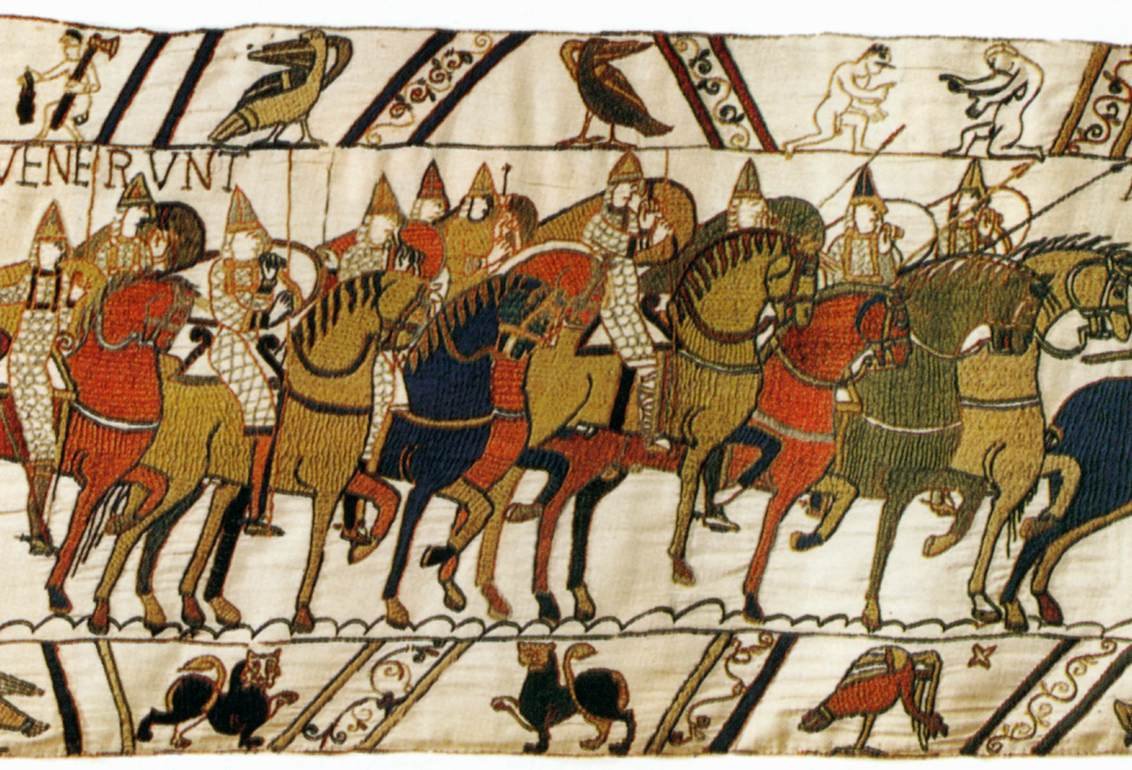The Bayeux Tapestry: One Of The Great Historical Records Of The Middle Ages
A. Sutherland – MessageToEagle.com – The Bayeux Tapestry is an impressive example of Romanesque art depicting the Norman Conquest of England in 1066 by William, duke of Normandy, the historical event that culminated in the famous Battle of Hastings (Oct. 14, 1066).
The Bayeux Tapestry’s vivid action expressed in the scenes strongly resembles a film, but it is more than that; the artifact is important as a source for 11th-century history.
When first referred to (1476), the tapestry was used once a year to decorate the nave of the cathedral in Bayeux, France. There it was “discovered” by the French antiquarian and scholar Bernard de Montfaucon, who published the earliest complete reproduction of it in 1730.
The artwork – made in England, in the 1070s – is an embroidered cloth, about 229 feet (70m), 19.5 inches (49.5 cm) wide and weighs 350 kilos. It consists of fifty-eight embroidered scenes (other sources mention more than 70 scenes) with Latin tituli, embroidered on linen with colored woollen yarns.
With few exceptions, the events are presented in the historically correct sequence, with each of the heroes appearing several times.
Having twice narrowly escaped destruction during the French Revolution, the tapestry was exhibited in Paris at Napoleon’s wish in 1803–04 and thereafter was in civil custody at Bayeux, except in 1871 (during the Franco-German War) and from September 1939 to March 1945 (during World War II).
The borders on the tapestry are full of additional depictions of subplots and legends that constitute a complement to the main scenes.
Towards the end, the vivid action of the Battle of Hastings culminates and the lower border of the tapestry is devoted to dead and wounded soldiers, hordes of bowmen, and the plundering of casualties.
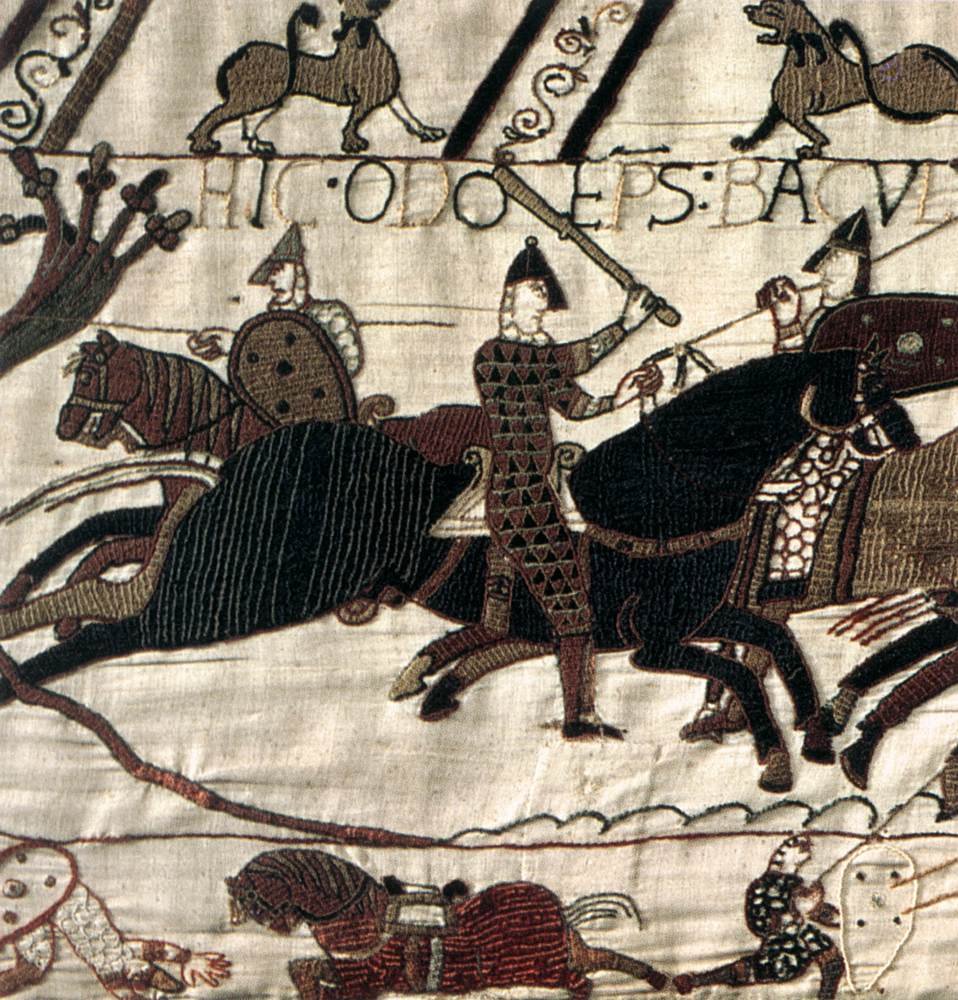
It is easy to imagine all these events because an unknown skilled artist – an unknown English weaver – narrates them visually, leading the eye from one phase to another.
The depictions on the Bayeux Tapestry are handmade with woollen threads and needled onto a strip of linen. They are embroidered in red, yellow, grey, bright green and a darker green, and three shades of blue.
Although the tapestry has been exposed to light and dirt for over nine centuries, the eight colors of woollen thread are still vivid, bright and beautiful.
Many art historians assume that the tapestry was made in southern England (perhaps at the St Augustine monastery in Canterbury) for Odo of Bayeux, bishop and half-brother of William the Conqueror. Almost certainly, the tapestry was hung in the hall of a bishop’s palace.
It is presently exhibited in a special museum in Bayeux, Normandy, France, with a Victorian replica in Reading, Berkshire, England.
Written by – A. Sutherland – MessageToEagle.com Senior Staff Writer
Copyright © MessageToeagle.com All rights reserved. This material may not be published, broadcast, rewritten or redistributed in whole or part without the express written permission of MessageToeagle.com
Expand for referencessource: Britannica
Related Posts
-
 New Mexico Mammoths Offer Evidence Of Early Humans In North America Much Earlier Than Previously Thought
No Comments | Aug 4, 2022
New Mexico Mammoths Offer Evidence Of Early Humans In North America Much Earlier Than Previously Thought
No Comments | Aug 4, 2022 -
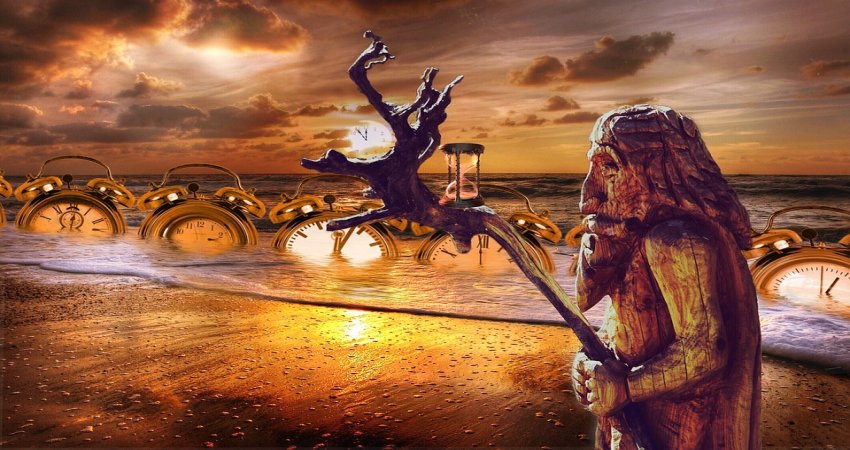 When Will Humans Go Extinct?
No Comments | May 7, 2020
When Will Humans Go Extinct?
No Comments | May 7, 2020 -
 Stunning Facial Reconstruction Of Saint Ludmila’s Sons Of The Czech Royal Premyslid Dynasty
No Comments | Mar 8, 2021
Stunning Facial Reconstruction Of Saint Ludmila’s Sons Of The Czech Royal Premyslid Dynasty
No Comments | Mar 8, 2021 -
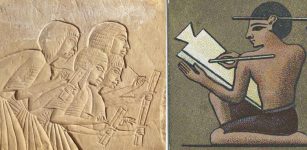 What Were Ancient Egyptian Schools Like?
No Comments | Jul 14, 2016
What Were Ancient Egyptian Schools Like?
No Comments | Jul 14, 2016 -
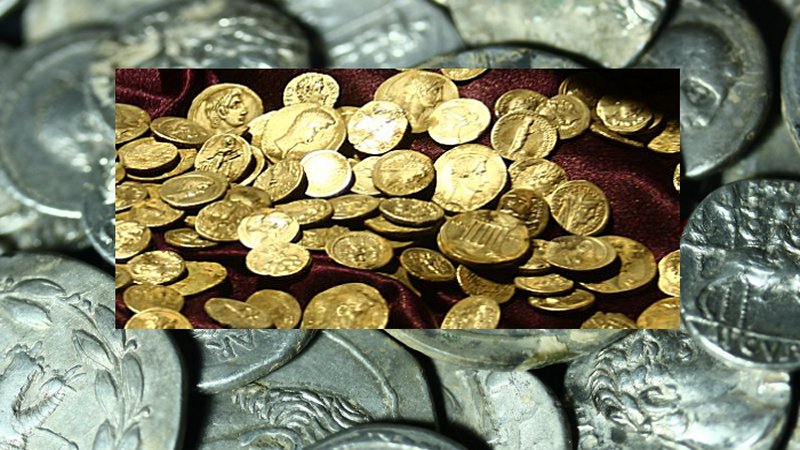 Rare Collection Of Roman Coins Unearthed In Ancient City Of Aizanoi, Turkey
No Comments | Feb 4, 2021
Rare Collection Of Roman Coins Unearthed In Ancient City Of Aizanoi, Turkey
No Comments | Feb 4, 2021 -
 Ants May Hold the Clues Why The Human Brain Decreased In Size 3,000 Years Ago – Scientists Say
No Comments | Oct 22, 2021
Ants May Hold the Clues Why The Human Brain Decreased In Size 3,000 Years Ago – Scientists Say
No Comments | Oct 22, 2021 -
 Archaeological Mystery Of Laos Megalithic Jars Continues – New Attempt To Solve The Riddle
No Comments | Mar 12, 2021
Archaeological Mystery Of Laos Megalithic Jars Continues – New Attempt To Solve The Riddle
No Comments | Mar 12, 2021 -
 Dyson Spheres And Powerful Alien Worlds – Let’s Make Science Fiction A Reality!
No Comments | Oct 3, 2012
Dyson Spheres And Powerful Alien Worlds – Let’s Make Science Fiction A Reality!
No Comments | Oct 3, 2012 -
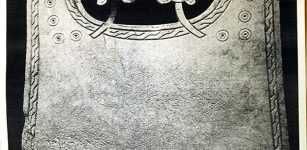 Ancient Scar Dragon Plaque And The Viking Boat To The Otherworld
No Comments | Feb 4, 2016
Ancient Scar Dragon Plaque And The Viking Boat To The Otherworld
No Comments | Feb 4, 2016 -
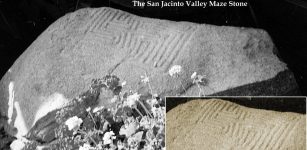 Baffling Prehistoric Maze Stones In Hemet And San Jacinta Valley, California
No Comments | Jun 24, 2016
Baffling Prehistoric Maze Stones In Hemet And San Jacinta Valley, California
No Comments | Jun 24, 2016


